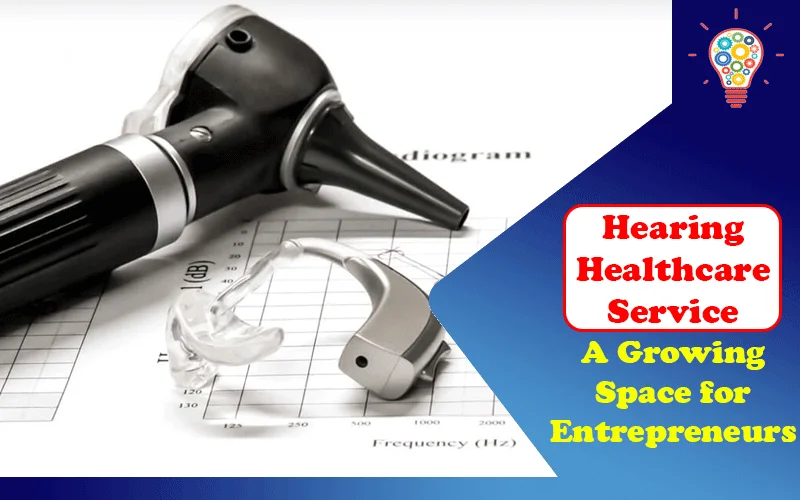McKinsey’s newest research shows consumers are increasingly interested in wellness. 79 percent of the 7,500 consumers surveyed in six countries believe health is essential. More than half of respondents rank it as a top priority.
On hearing health, those who choose to become a hearing aid provider can fill a big void in the market. About 10 % of those who participated in the recent Apple Hearing Study were diagnosed with hearing loss. 75 % were in need of hearing devices.
The study found that almost half of the participants had nr been tested for hearing in at least ten years. One in four participants experienced ringing in the ears once or more per week.
More or less pronounced hearing loss is a prevalent condition over the age of 60. Not everyone is aware of it, and age is not the only factor affecting the ability to distinguish sounds clearly. Consumers are expected to spend more on both wellness products and services—hearing aids and services included.
A person seeking audiological services may do so for numerous reasons. These include self-recognized concerns about hearing and ear health or being referred to audiology following a medical evaluation. They may also do that after being asked by friends or family members who suspect hearing loss or are within the scope of their routine healthcare checkups.
Depending on factors such as the risk of ear disease, the evaluation may differ among individuals. An assessment of hearing aims to identify any possible health conditions and determine how hearing loss affects your overall health.
Even at a young age, trauma, ear infections, malformations, or continuous exposure to loud noises, for example, for professional reasons, can cause hearing loss.
Especially when the progression is slow and daily, noticing the changes is difficult. For this reason, in many cases, patients do not carry out diagnostic checks unless deafness becomes a critical problem: for example, when it comes to the difficulty of hearing devices such as the telephone, the television correctly. Or when you have difficulty distinguishing words clearly during everyday dialogue.
Table of Contents
The Main Hearing Tests
Audiometric tests
Audiometric tests aim to identify the threshold in decibels at which the patient can perceive a sound. There are two types: tonal audiometry and speech audiometry.
The tonal audiometry tests
Tonal audiometry is performed by evaluating the perception of sound via the air with headphones. The patient signals the minimum threshold of audibility. Subsequently, the hearing threshold is achieved through the bone with a vibrator: the doctor places the small device that vibrates behind the patient’s ear.
The vibration sends the signal directly to the acoustic nerve regardless of the disease state of the eardrum or ossicular chain. Also, sounds with well-defined frequencies are used in this case, and the results are transcribed on the audiogram.
By comparing these two methods, the doctor can assess the hearing threshold and the cause of deafness if linked to a disease of the eardrum and ossicular chain or acoustic nerve.
Speech audiometry tests
Speech audiometry usually takes place with the use of headphones (sometimes it is performed in a free field, without headphones).
The patient listens to a series of words that he/she must repeat to the examiner, and the doctor writes down how many words are understood correctly. It is a critical examination since the pathologies of the inner ear determine deafness.
These can be even mild in the tonal audiometry but with poor perception of words. Therefore, voice audiometry allows to establish the site of the hearing lesion and quantify its severity. The audiometric examination is painless and does not require any preparation.
Impedance tests
The impedance measurement is used to assess the health and mobility of the ossicular chain, the eardrum of the snail, and the acoustic nerve. It is not a painful test and is done by inserting a probe into the ear canal.
This produces changes in the pressure of the air reaching the eardrum and sounds of different frequencies. The examination evaluates the motility of the eardrum and ossicular chain and the functionality of the acoustic nerve.
In otitis media, where there is an outflow in the eardrum case, the tympanic motility is reduced or absent. In otosclerosis involving stiffness of the stapes, there is good tympanic motility but not of the ossicles.
In snail diseases, the dynamic range of hearing is reduced, i.e., sounds slightly louder than the hearing threshold cause discomfort. Through the impedance analysis of the stirrup muscle reflex, this pathology and other pathologies of the acoustic nerve are highlighted.
Vestibular tests
Vestibular tests are used to evaluate nystagmus, the rapid movements of the eyes caused by some types of vertigo. The information is reported electronically on a diagram: the process is called nystagmography.
Based on the characteristics of the nystagmus and the patient’s head positioning tests, it is possible to distinguish whether the balance pathology is central or peripheral.
To determine if it affects the brain or the inner ear, or the auditory nerve and, in this case, to localize at which point of the organ of equilibrium the pathology occurred. In many cases, precisely locating the labyrinthine site of the disease allows the otorine to intervene to resolve it quickly with maneuvers.
While the hearing healthcare market appears lucrative, companies must realize that consumers aren’t all the same. Most of them tend to behave very differently based on the Mckinsey survey. The wellness enthusiast is a high-income consumer who actively monitors brands online and tracks new products on social media.
Brands that are environmentally sustainable and have clean/natural ingredients are preferred, and consumers are willing to pay more for them. Before purchasing wellness products, price-conscious consumers carefully examine features and benefits to ensure they get the best deal.
Read Also: Things To Consider In Choosing The Right Hearing Aids

